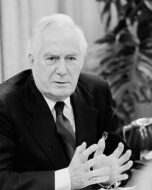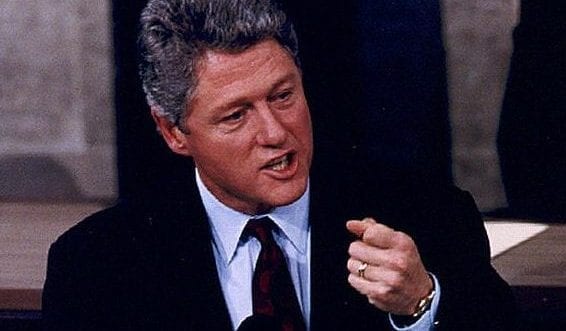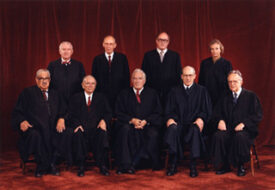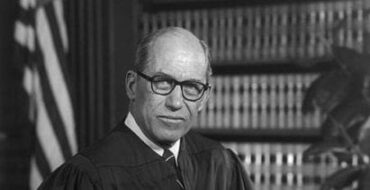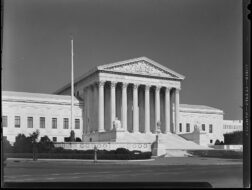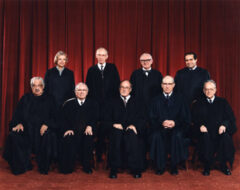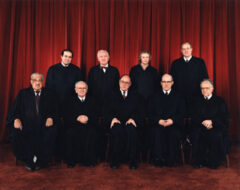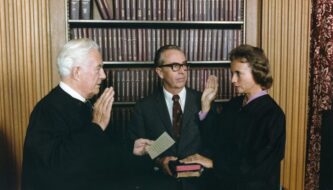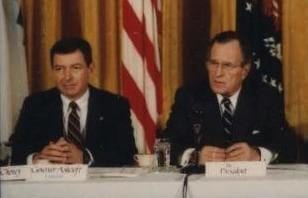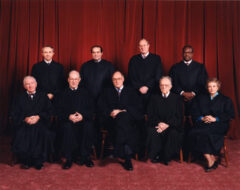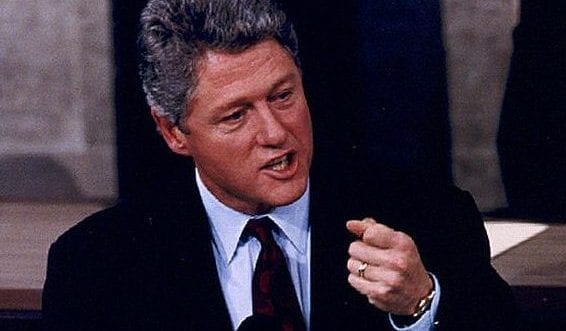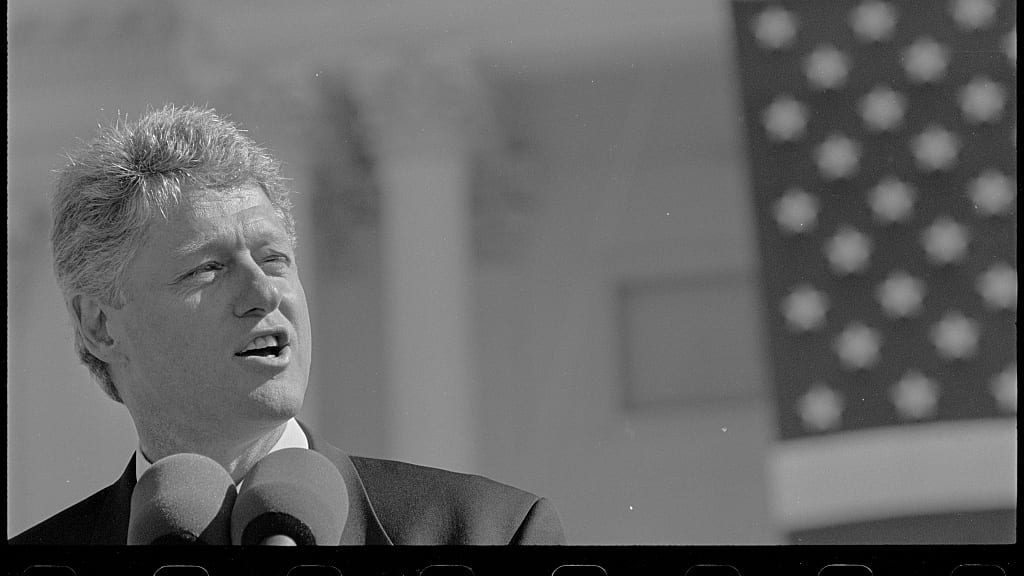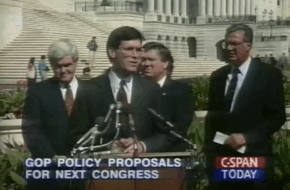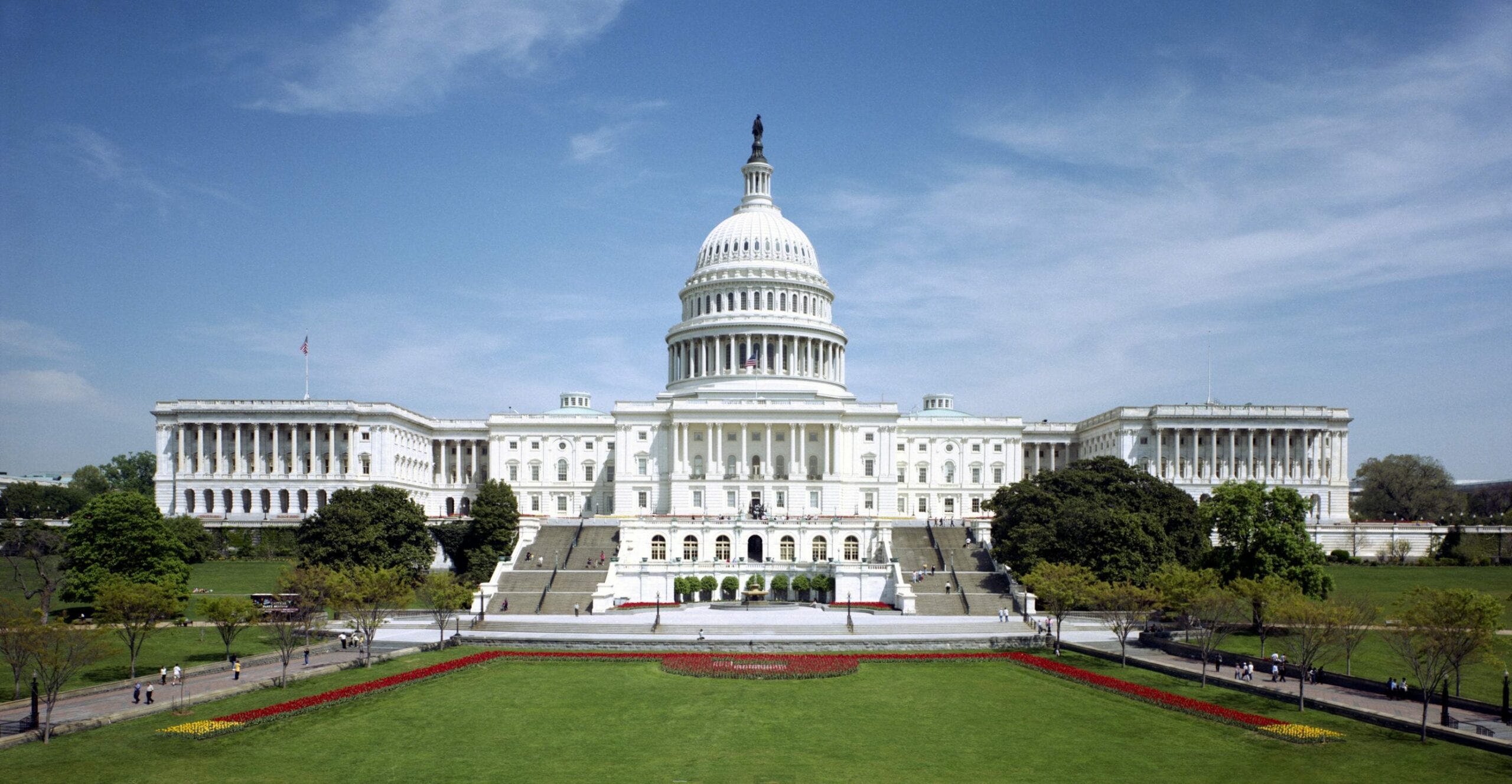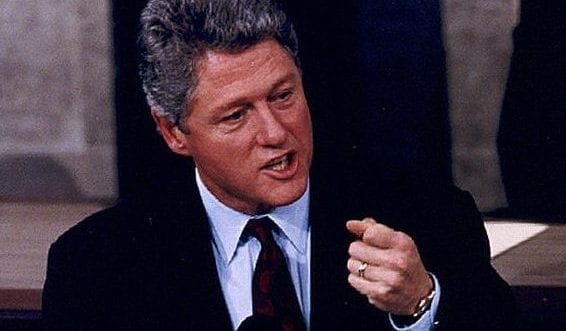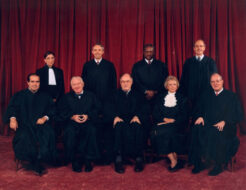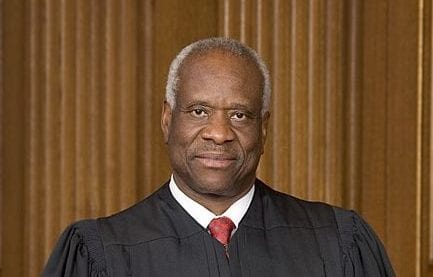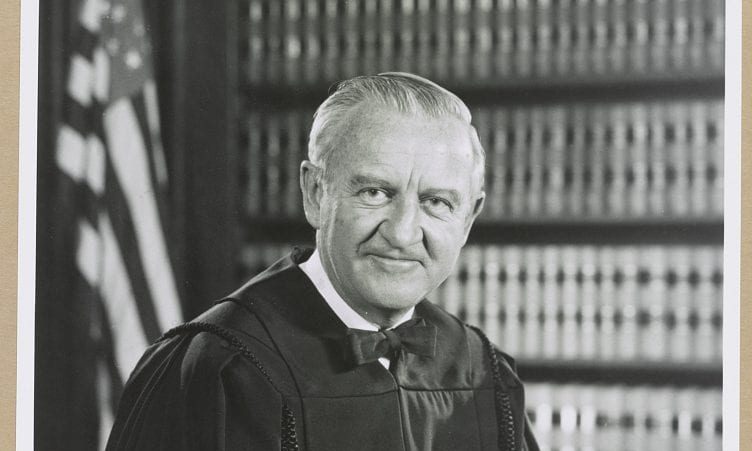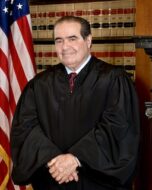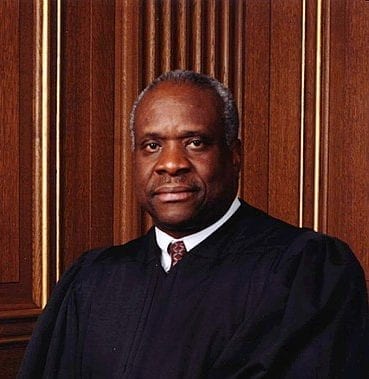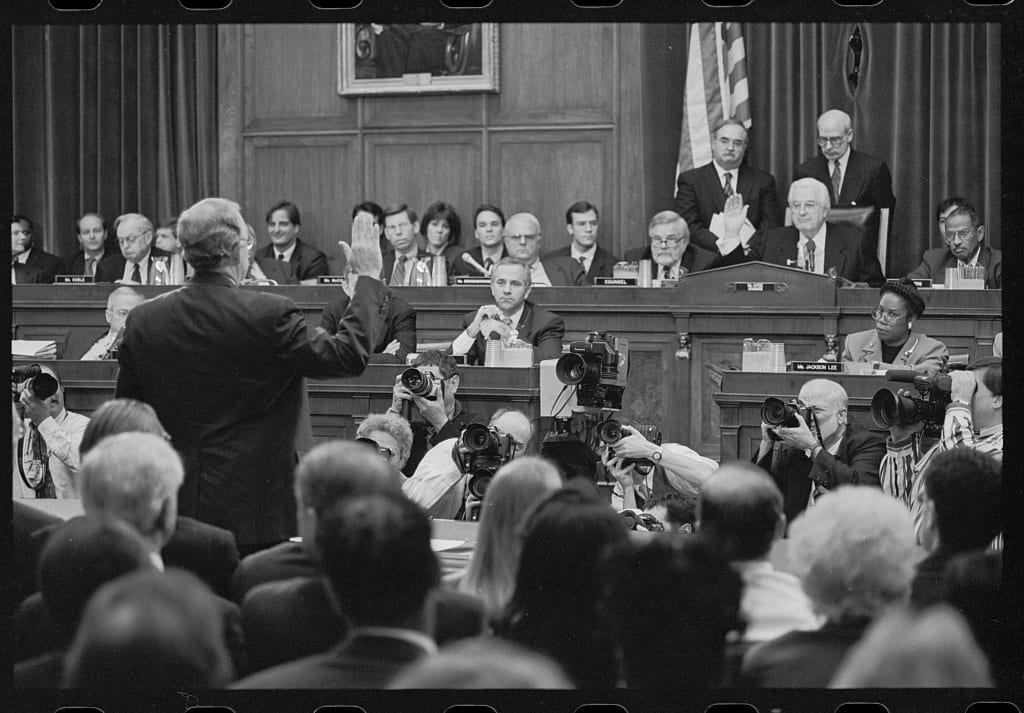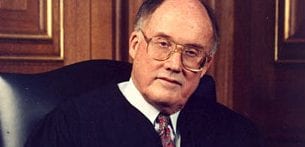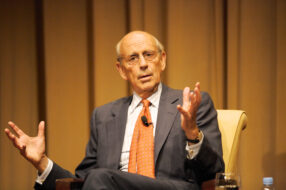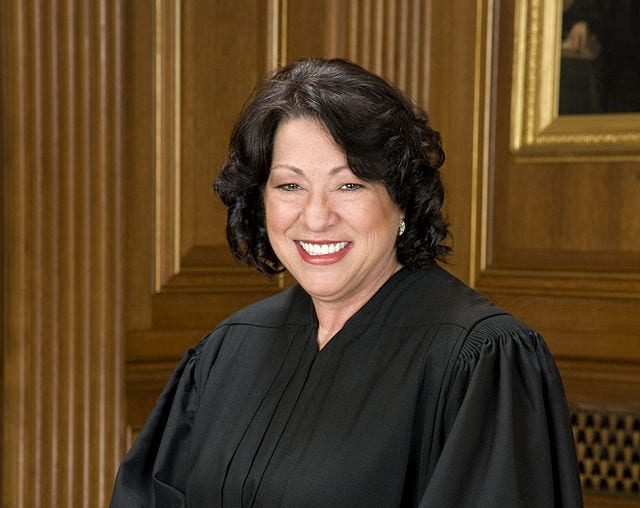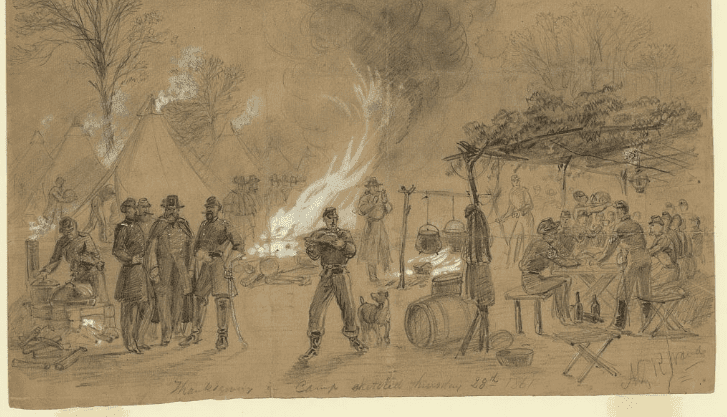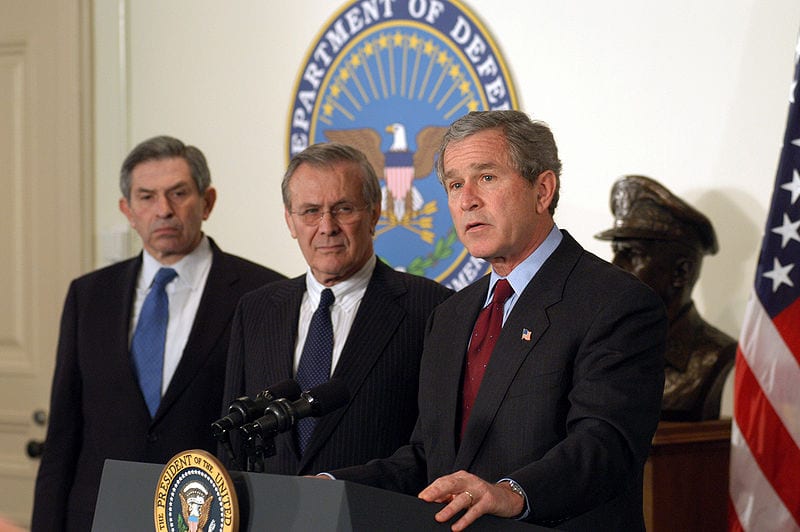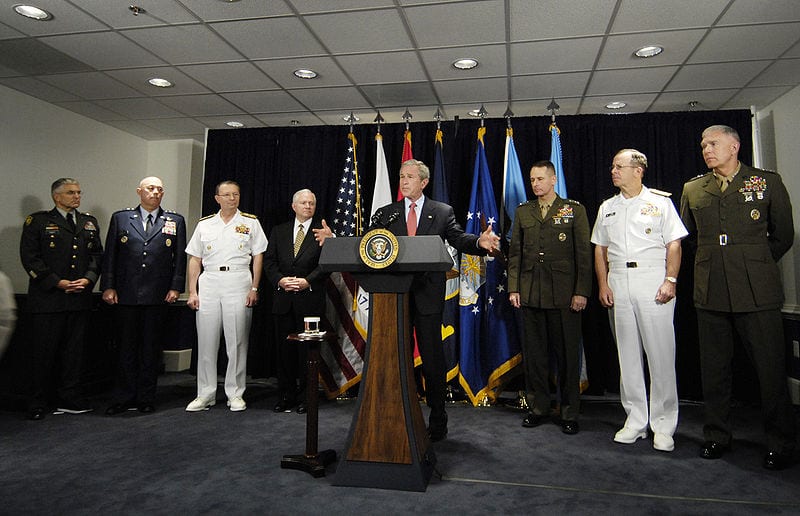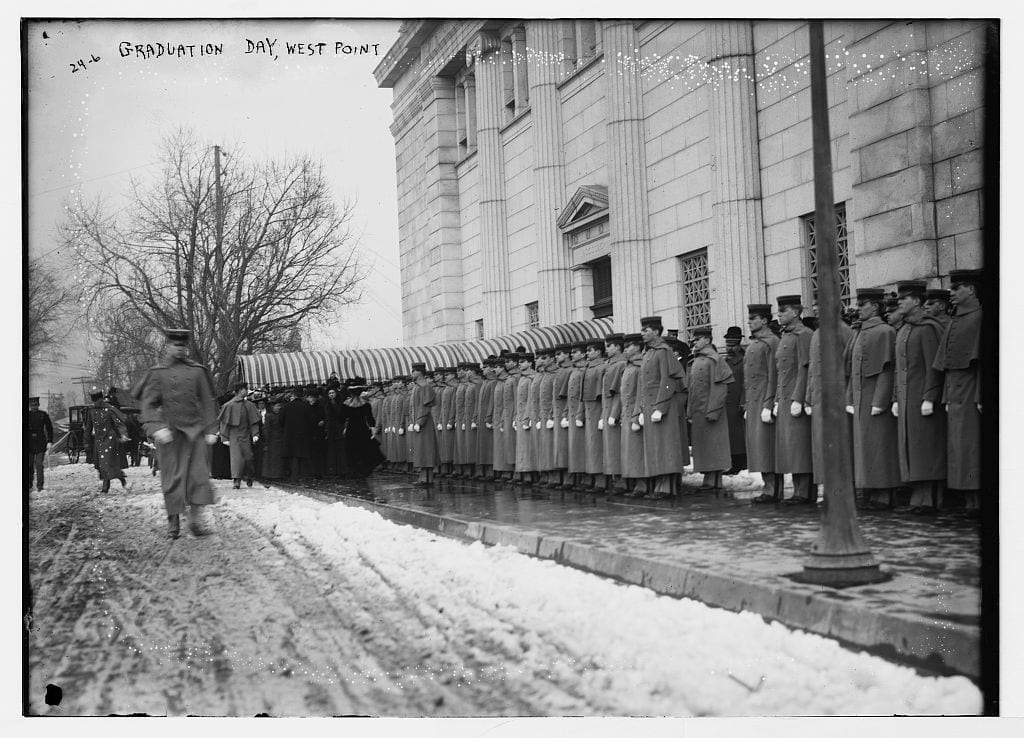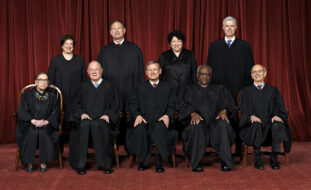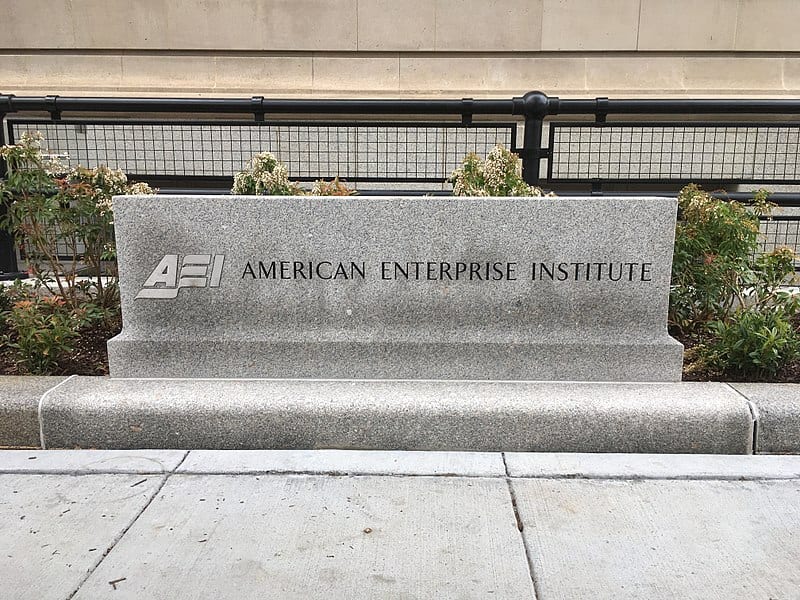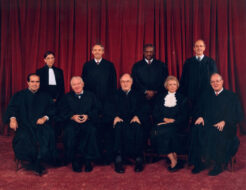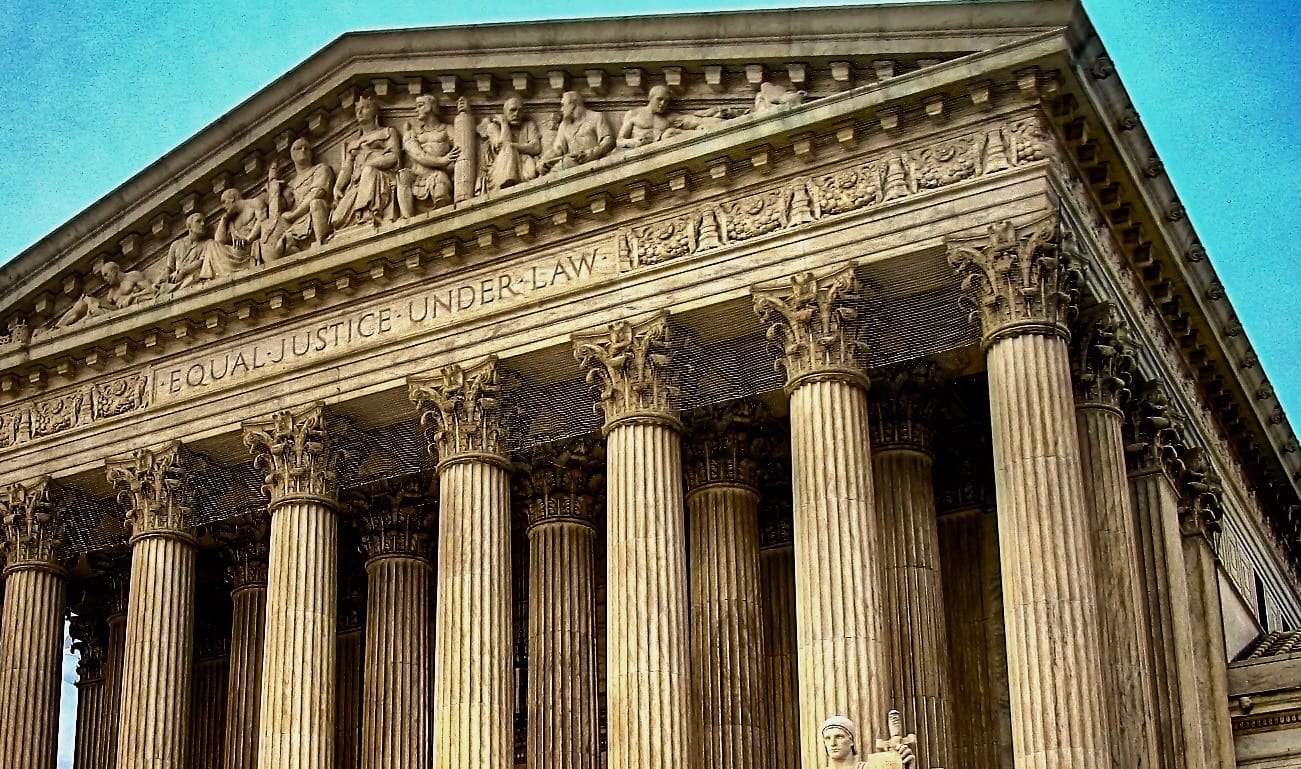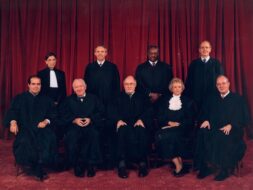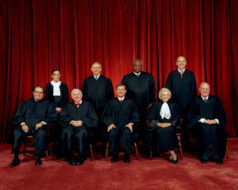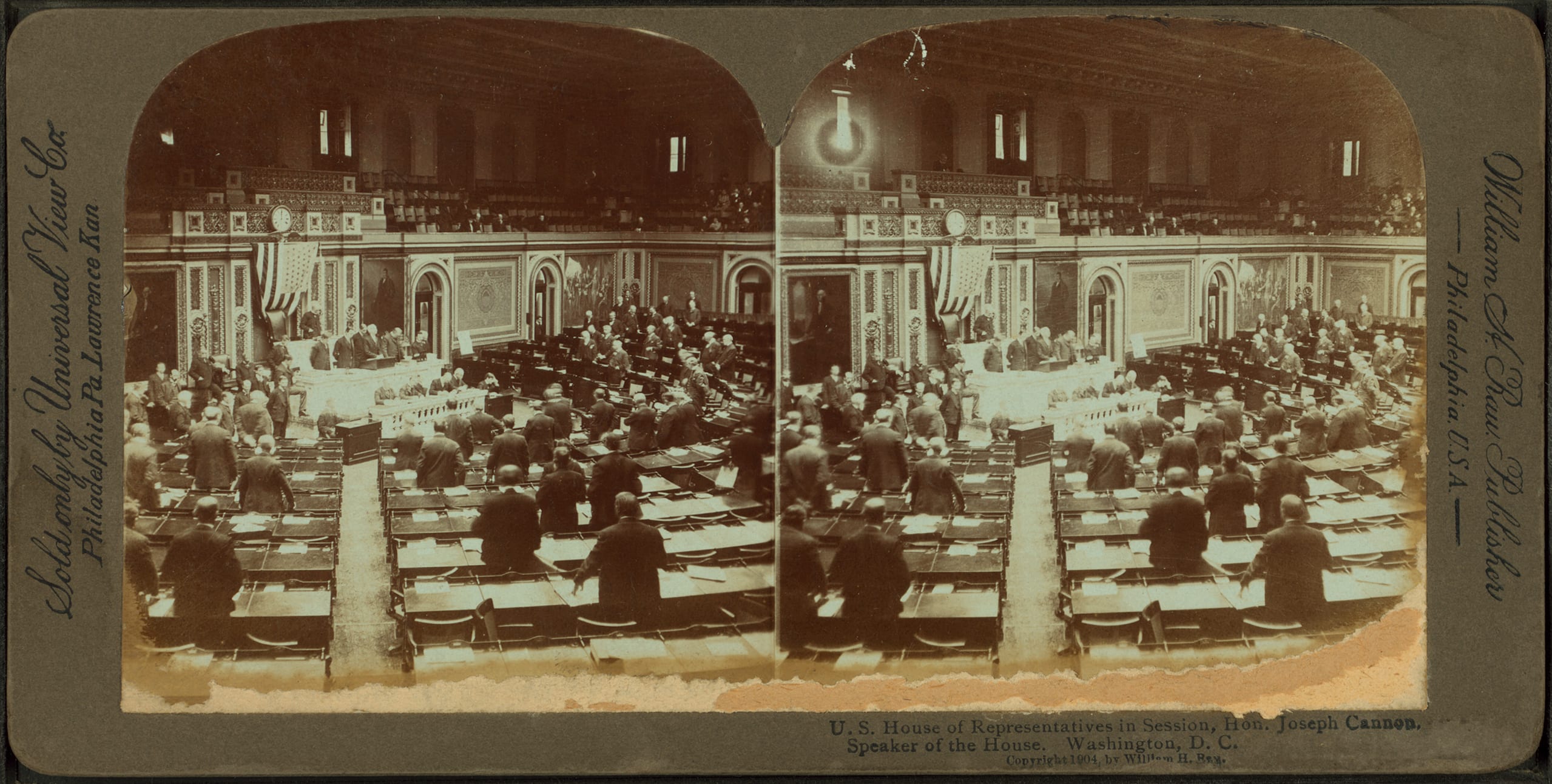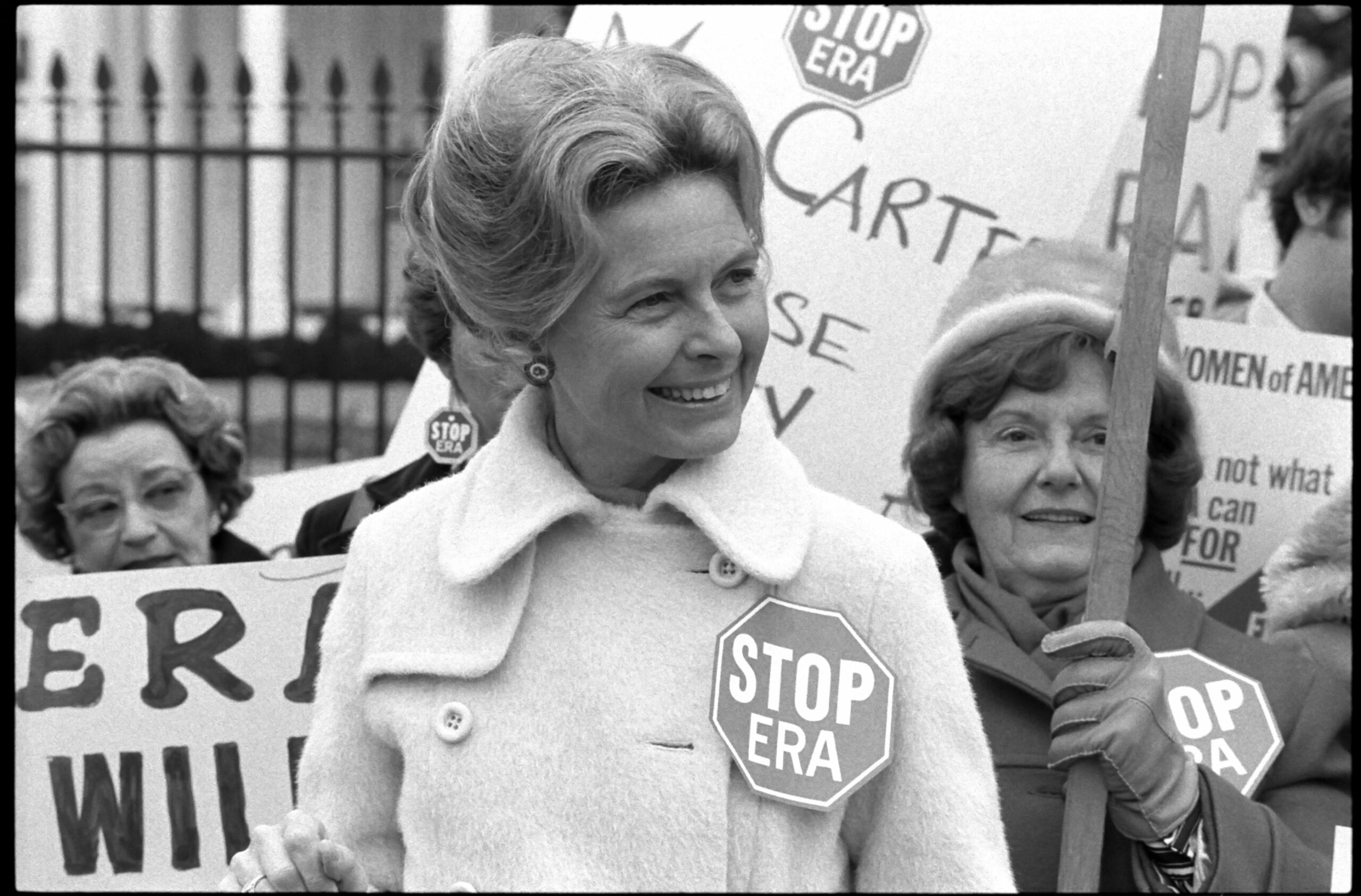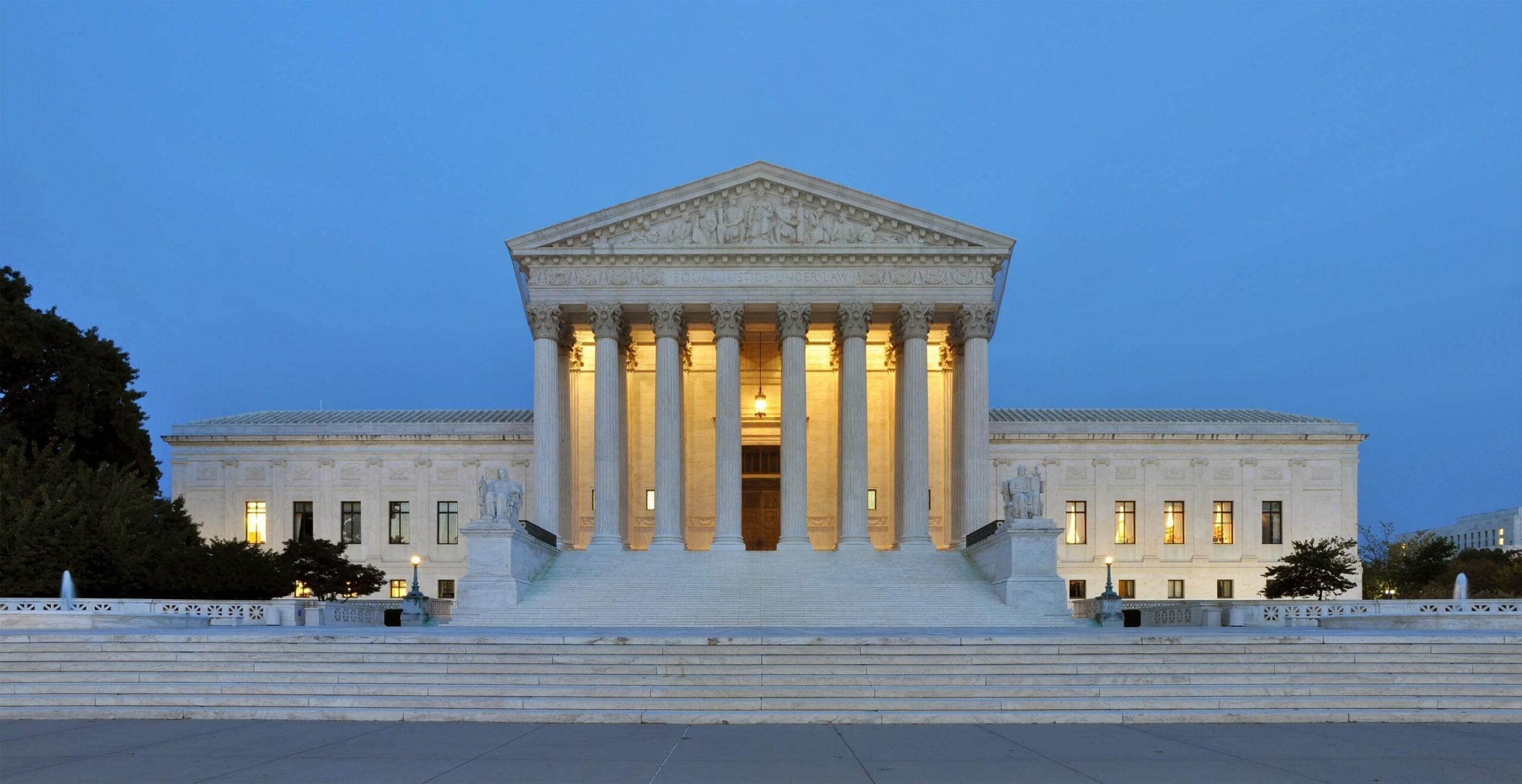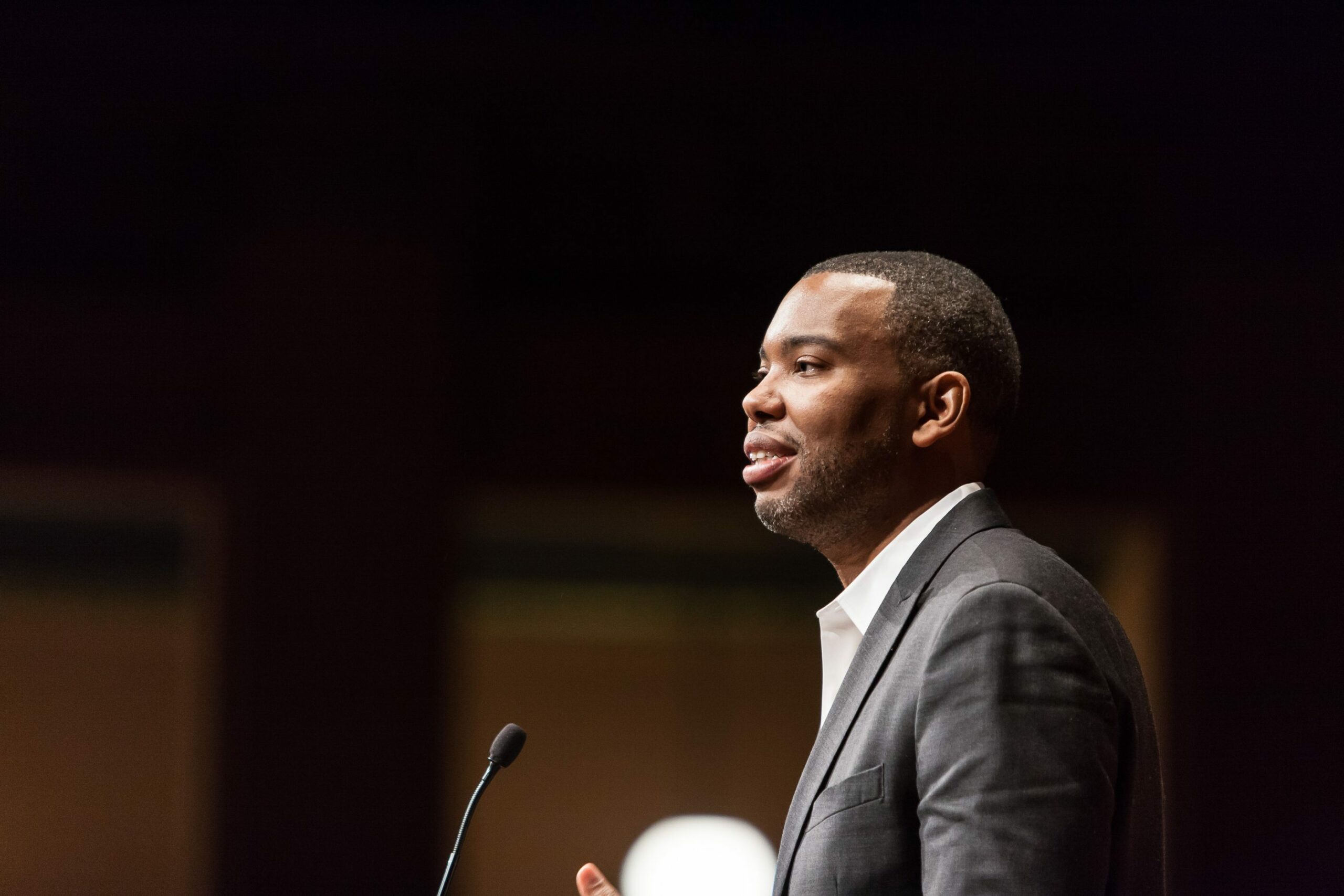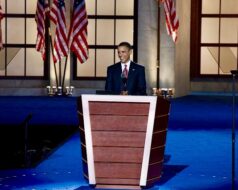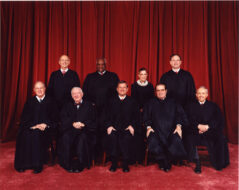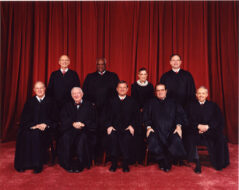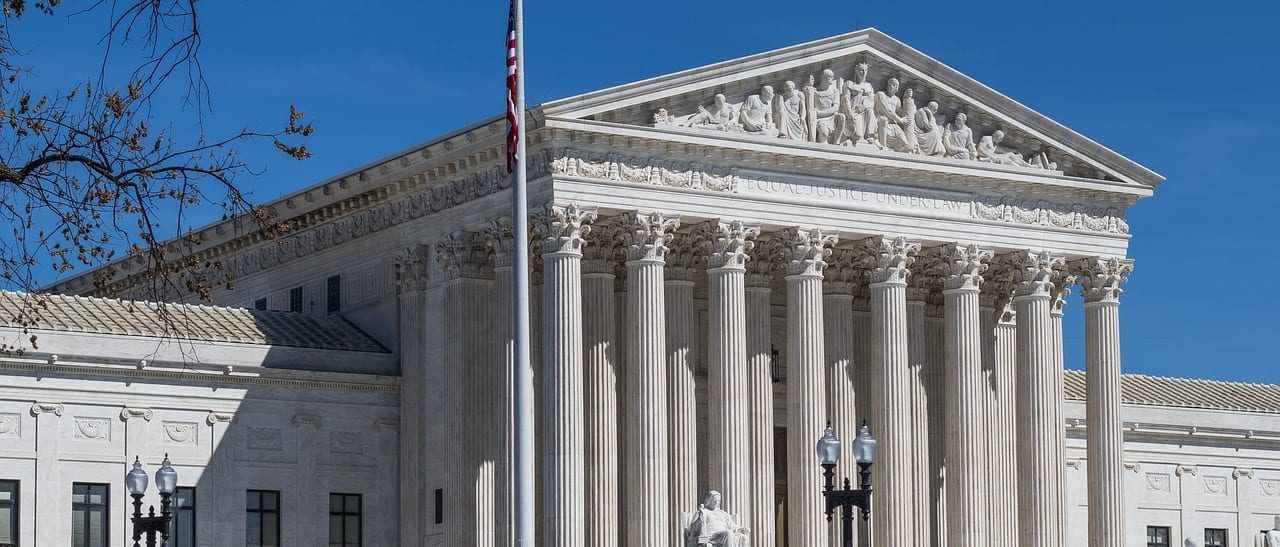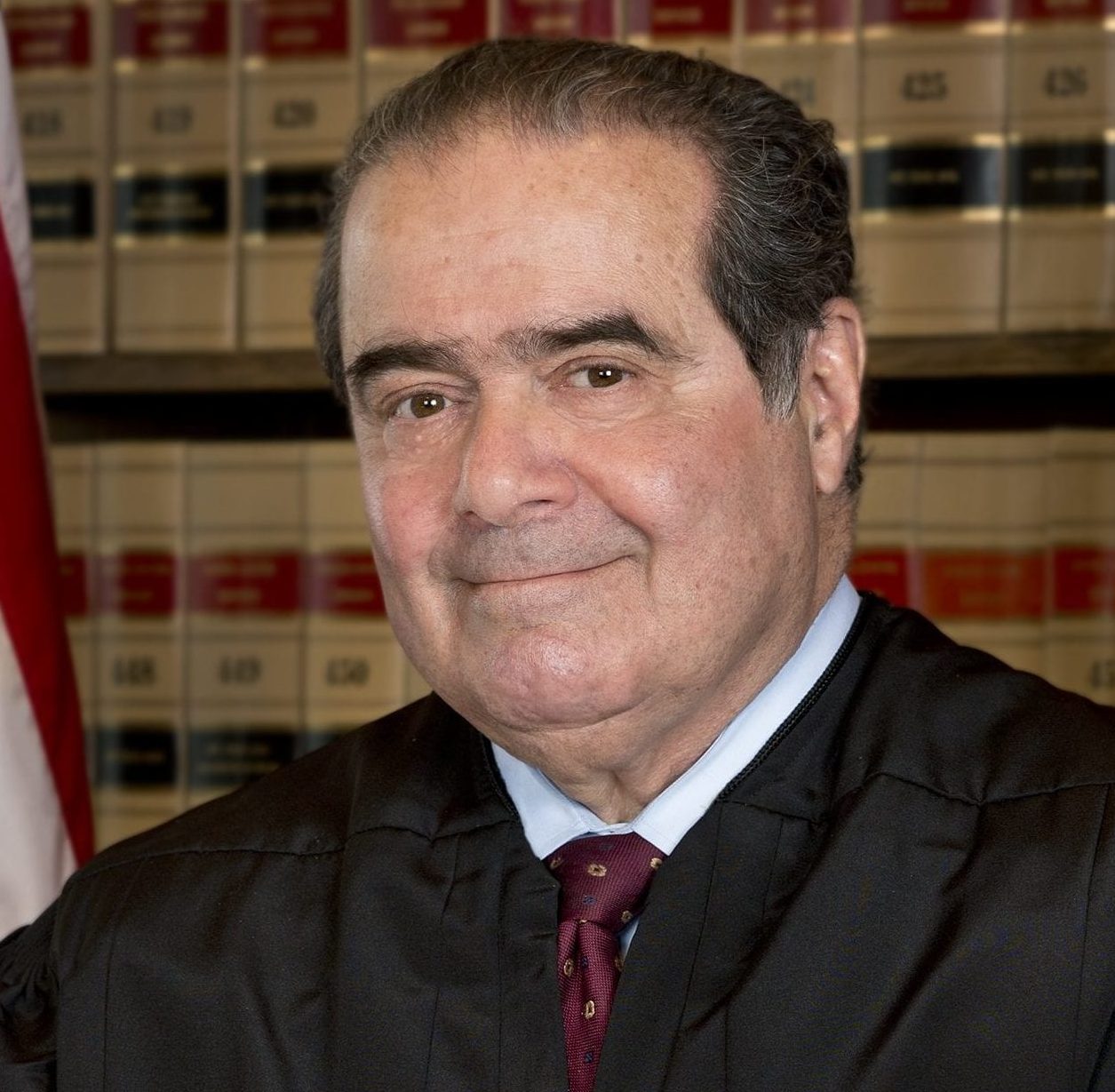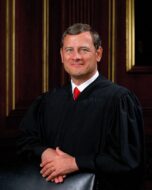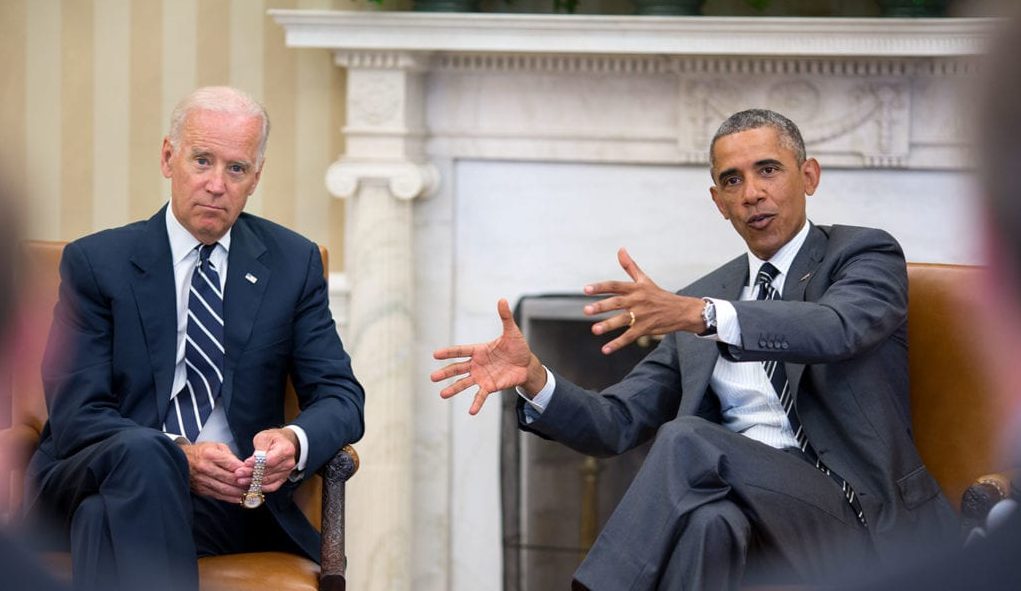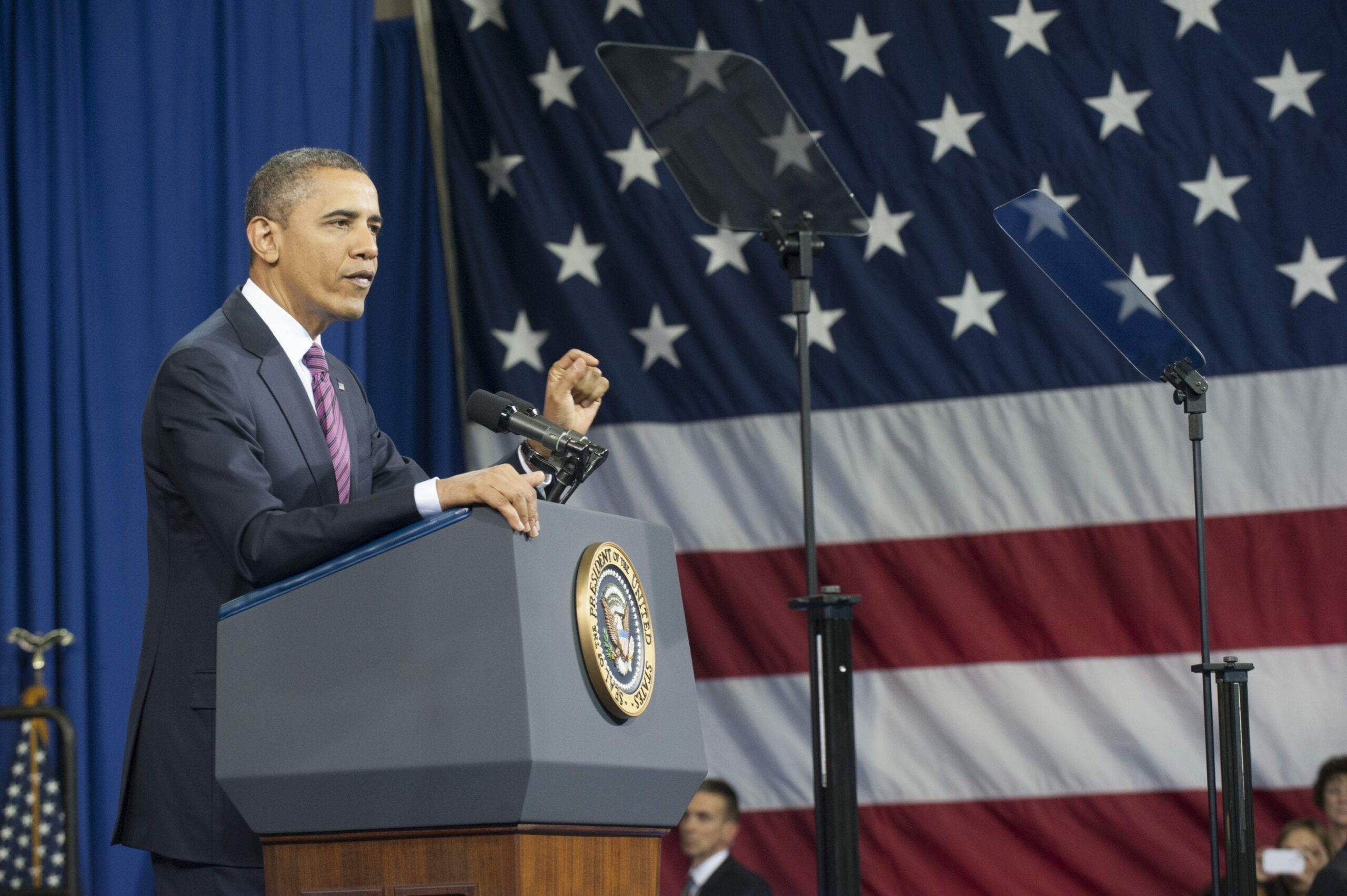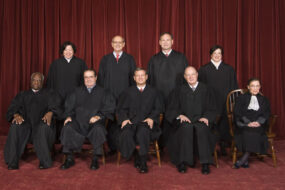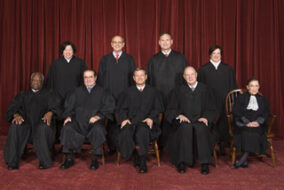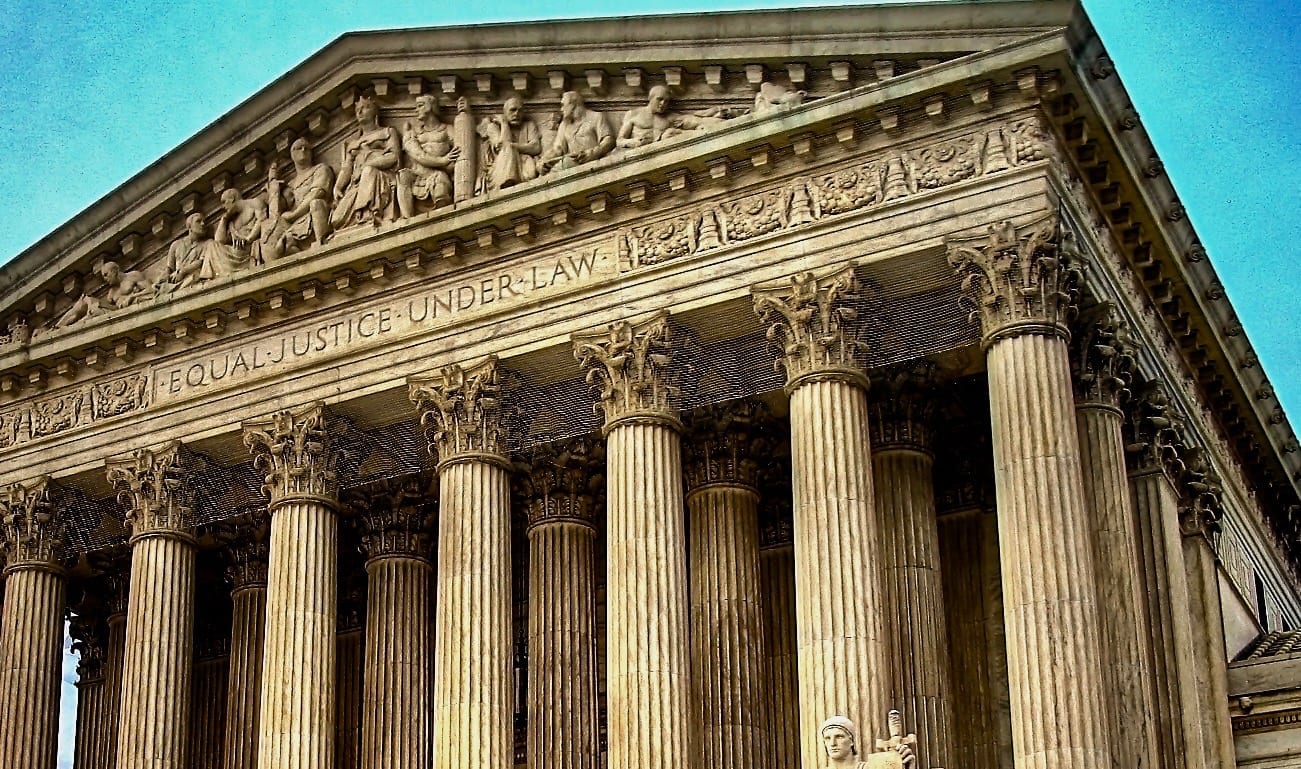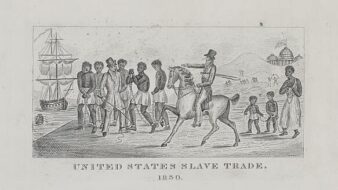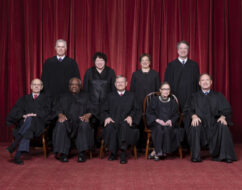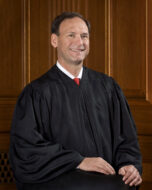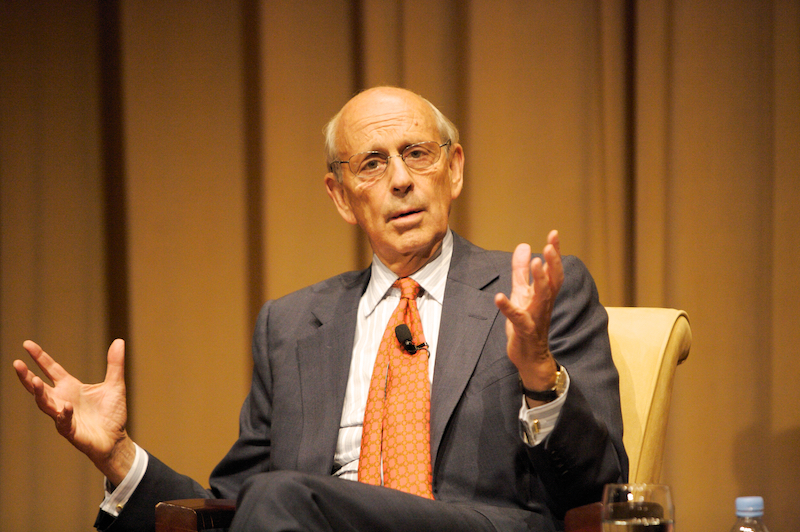
No related resources
Introduction
In this James Madison Lecture at New York University Law School, Justice Stephen Breyer (1938–) offered his approach to judicial decision making. While not offering a comprehensive theory of interpretation, he clearly articulated a progressive alternative to the originalism of Antonin Scalia and other conservatives. Breyer recommended a modest role for judges, one more grounded in the constitutional text than other nonoriginalist theories of interpretation, thus avoiding charges of activism. The Constitution, he contended, is centrally concerned with “active liberty,” a more ancient understanding of liberty that focuses on the ability of citizens to participate in self-government, as opposed to modern liberty, which focuses on the absence of governmental coercion. Breyer focused on several areas—speech, federalism, privacy, equal protection, and statutory interpretation—to show how his philosophy worked in practice. (This excerpt includes only his discussion of privacy.) He argued that his approach “emphasizes values underlying specific constitutional phrases, sees the Constitution itself as a single document with certain basic related objectives, and assumes that the latter can inform a judge’s understanding of the former.” This focus on underlying values helps to “constrain subjectivity” in judicial decision making and, in fact, “suggest the importance of judicial restraint” because they emphasize the centrality of democratic self-government in the Constitution. As one of the leading justices on the “liberal” wing of the Court, Breyer in this speech provided important insight into his approach to both constitutional interpretation and the role of a justice.
Source: Justice Stephen Breyer, “Our Democratic Constitution,” 77 New York University Law Review 77, no. 2 (May 2002): 245–272, https://www.nyulawreview.org/wp-content/
uploads/2018/08/NYULawReview-77-2-Breyer.pdf.
The United States is a nation built on principles of human liberty—a liberty that embraces concepts of democracy. The French political philosopher Benjamin Constant understood the connection. He distinguished between liberty as practiced by the ancient Greeks and Romans and the “liberty” of the eighteenth- and nineteenth-century “moderns.” Writing thirty years after the French Revolution and not long after the adoption of our American Constitution, Constant said that the “liberty of the ancients” consisted of an “active and constant participation in collective power.” The ancient world, he added, believed that liberty consisted of “submitting to all the citizens, without exception, the care and assessment of their most sacred interests.”. . .
Constant distinguished that “liberty of the ancients” from the more “modern liberty” consisting of “individual independence” from governmental restriction. …1
. . .I shall argue that, when judges interpret the Constitution, they should place greater emphasis upon the “ancient liberty,” that is, the people’s right to “an active and constant participation in collective power.” I believe that increased emphasis upon this active liberty will lead to better constitutional law—law that will promote governmental solutions consistent with individual dignity and community need.
At the same time, my discussion will illustrate an approach to constitutional interpretation that places considerable weight upon consequences—consequences valued in terms of basic constitutional purposes. It disavows a contrary constitutional approach, a more “legalistic” approach that places too much weight upon language, history, tradition, and precedent alone while understating the importance of consequences. If the discussion helps to convince you that the more “consequential” approach has virtue, so much the better.
Three basic views underlie my discussion. First, the Constitution, considered as a whole, creates a framework for a certain kind of government. Its general objectives can be described abstractly as including: (1) democratic self-government; (2) dispersion of power (avoiding concentration of too much power in too few hands); (3) individual dignity (through protection of individual liberties); (4) equality before the law (through equal protection of the law); and (5) the rule of law itself. . . .
Second, the Court, while always respecting language, tradition, and precedent, nonetheless has emphasized different general constitutional objectives at different periods in its history. Thus one can characterize the early nineteenth century as a period during which the Court helped to establish the authority of the federal government, including the federal judiciary.2 During the late nineteenth and early twentieth centuries, the Court underemphasized the Constitution’s efforts to secure participation by black citizens in representative government—efforts related to the participatory “active liberty” of the ancients. At the same time, it overemphasized protection of property rights, such as an individual’s freedom to contract without government interference, to the point where President Franklin Delano Roosevelt commented that the Court’s Lochner era decisions had created a legal “no-man’s-land” that neither state nor federal regulatory authority had the power to enter.3
The New Deal Court and the Warren Court reemphasized “active liberty.” The former did so by dismantling various Lochner era distinctions, thereby expanding the scope of democratic self-government. The latter did so by interpreting the Civil War Amendments in light of their purposes to mean what they say, thereby helping African Americans become members of the nation’s community of self-governing citizens—a community that the Court expanded further in its “one person, one vote” decisions.4
More recently, in my view, the Court has again underemphasized the importance of the citizen’s active liberty. I will argue for a contemporary reemphasis that better combines “the liberty of the ancients” with that “freedom of governmental restraint” that Constant called “modern.”
Third, the real-world consequences of a particular interpretive decision, valued in terms of basic constitutional purposes, play an important role in constitutional decision making. To that extent, my approach differs from that of judges who would place nearly exclusive interpretive weight upon language, history, tradition, and precedent. In truth, the difference is one of degree. Virtually all judges, when interpreting a constitution or a statute, refer at one time or another to language, to history, to tradition, to precedent, to purpose, and to consequences. Even those who take a more literal approach to constitutional interpretation sometimes find consequences and general purposes relevant. But the more “literalist” judge tends to ask those who cannot find an interpretive answer in language, history, tradition, and precedent alone to rethink the problem several times before making consequences determinative. The more literal judges may hope to find, in language, history, tradition, and precedent, objective interpretive standards; they may seek to avoid an interpretive subjectivity that could confuse a judge’s personal idea of what is good for that which the Constitution demands; and they may believe that these “original” sources more readily will yield rules that can guide other institutions, including lower courts.5 These objectives are desirable, but I do not think the literal approach will achieve them, and, in any event, the constitutional price is too high. . . .
To focus upon that active liberty, to understand it as one of the Constitution’s handful of general objectives, will lead judges to consider the constitutionality of statutes with a certain modesty. That modesty embodies an understanding of the judges’ own expertise compared, for example, with that of a legislature. It reflects the concern that a judiciary too ready to “correct” legislative error may deprive “the people” of “the political experience, and the moral education and stimulus that come from . . . correcting their own errors.”6 It encompasses that doubt, caution, prudence, and concern—that state of not being “too sure” of oneself—that Learned Hand described as the “spirit of liberty.”7 In a word, it argues for traditional “judicial restraint.”. . .
I next turn to a different kind of example. It focuses upon current threats to the protection of privacy, defined as the power to “control information about oneself.” It seeks to illustrate what active liberty is like in modern America when we seek to arrive democratically at solutions to important technologically based problems. And it suggests a need for judicial caution and humility when certain privacy matters, such as the balance between free speech and privacy, are at issue.
First, I must describe the “privacy” problem. That problem is unusually complex. It clearly has become even more so since the terrorist attacks. For one thing, those who agree that privacy is important disagree about why. Some emphasize the need to be left alone, not bothered by others, or that privacy is important because it prevents people from being judged out of context. Some emphasize the way in which relationships of love and friendship depend upon trust, which implies a sharing of information not available to all. Others find connections between privacy and individualism, in that privacy encourages nonconformity. Still others find connections between privacy and equality, in that limitations upon the availability of individualized information leads private businesses to treat all customers alike. For some, or all, of these reasons, legal rules protecting privacy help to ensure an individual’s dignity.
For another thing, the law protects privacy only because of the way in which technology interacts with different laws. Some laws, such as trespass, wiretapping, eavesdropping, and search-and-seizure laws, protect particular places or sites, such as homes or telephones, from searches and monitoring. Other laws protect not places, but kinds of information, for example, laws that forbid the publication of certain personal information even by a person who obtained that information legally. Taken together these laws protect privacy to different degrees depending upon place, individual status, kind of intrusion, and type of information.
Further, technological advances have changed the extent to which present laws can protect privacy. Video cameras now monitor shopping malls, schools, parks, office buildings, city streets, and other places that present law leaves unprotected. Scanners and interceptors can overhear virtually any electronic conversation. Thermal imaging devices detect activities taking place within the home. Computers record and collate information obtained in any of these ways and others. This technology means an ability to observe, collate, and permanently record a vast amount of information about individuals that the law previously may have made available for collection but which, in practice, could not easily have been recorded and collected. The nature of the current or future privacy threat depends upon how this technological/legal fact will affect differently situated individuals.
These circumstances mean that efforts to revise privacy law to take account of the new technology will involve, in different areas of human activity, the balancing of values in light of predictions about the technological future. . . .
The complex nature of [such] problems calls for resolution through a form of participatory democracy. Ideally, that participatory process does not involve legislators, administrators, or judges imposing law from above. Rather, it involves law revision that bubbles up from below. Serious complex changes in law are often made in the context of a national conversation involving, among others, scientists, engineers, businessmen and women, and the media, along with legislators, judges, and many ordinary citizens whose lives the new technology will affect. That conversation takes place through many meetings, symposia, and discussions, through journal articles and media reports, through legislative hearings and court cases. Lawyers participate fully in this discussion, translating specialized knowledge into ordinary English, defining issues, creating consensus. Typically, administrators and legislators then make decisions, with courts later resolving any constitutional issues that those decisions raise. This “conversation” is the participatory democratic process itself.
The presence of this kind of problem and this kind of democratic process helps to explain, because it suggests a need for, judicial caution or modesty. That is why, for example, the Court’s decisions so far have hesitated to preempt that process. In one recent case the Court considered a cell phone conversation that an unknown private individual had intercepted with a scanner and delivered to a radio station. A statute forbade the broadcast of that conversation, even though the radio station itself had not planned or participated in the intercept. The Court had to determine the scope of the station’s First Amendment right to broadcast given the privacy interests that the statute sought to protect. The Court held that the First Amendment trumped the statute, permitting the radio station to broadcast the information. But the holding was narrow. It focused upon the particular circumstances present, explicitly leaving open broadcaster liability in other, less innocent, circumstances.
The narrowness of the holding itself serves a constitutional purpose. The privacy “conversation” is ongoing. Congress could well rewrite the statute, tailoring it more finely to current technological facts, such as the widespread availability of scanners and the possibility of protecting conversations through encryption. A broader constitutional rule might itself limit legislative options in ways now unforeseeable. And doing so is particularly dangerous where statutory protection of an important personal liberty is at issue.
By way of contrast, the Court held unconstitutional police efforts to use, without a warrant, a thermal imaging device placed on a public sidewalk. The device permitted police to identify activities taking place within a private house. The case required the Court simply to ask whether the residents had a reasonable expectation that their activities within the house would not be disclosed to the public in this way—a well-established Fourth Amendment principle. Hence the case asked the Court to pour new technological wine into old bottles; it did not suggest that doing so would significantly interfere with an ongoing democratic policy conversation.
The privacy example suggests more by way of caution. It warns against adopting an overly rigid method of interpreting the Constitution—placing weight upon eighteenth-century details to the point where it becomes difficult for a twenty-first-century court to apply the document’s underlying values. At a minimum it suggests that courts, in determining the breadth of a constitutional holding, should look to the effect of a holding on the ongoing policy process, distinguishing, as I have suggested, between the “eavesdropping” and the “thermal heat” types of cases. And it makes clear that judicial caution in such matters does not reflect the fact that judges are mitigating their legal concerns with practical considerations. Rather, the Constitution itself is a practical document—a document that authorizes the Court to proceed practically when it examines new laws in light of the Constitution’s enduring, underlying values. . . .
The instances I have discussed encompass different areas of law. . . .In each instance, the discussion illustrates how increased focus upon the Constitution’s basic democratic objective might make a difference—in refining doctrinal rules, in evaluating consequences, in applying practical cautionary principles, in interacting with other constitutional objectives, and in explicating statutory silences. In each instance, the discussion suggests how that increased focus might mean better law. And “better” in this context means both (1) better able to satisfy the Constitution’s purposes, and (2) better able to cope with contemporary problems. The discussion, while not proving its point purely through logic or empirical demonstration, uses examples to create a pattern. The pattern suggests a need for increased judicial emphasis upon the Constitution’s democratic objective.
My discussion emphasizes values underlying specific constitutional phrases, sees the Constitution itself as a single document with certain basic related objectives, and assumes that the latter can inform a judge’s understanding of the former. Might that discussion persuade those who prefer to believe that the keys to constitutional interpretation instead lie in specific language, history, tradition, and precedent and who fear that a contrary approach would permit judges too often to act too subjectively?
Perhaps so, for several reasons. First, the area of interpretive disagreement is more limited than many believe. Judges can, and should, decide most cases, including constitutional cases, through the use of language, history, tradition, and precedent. Judges will often agree as to how these factors determine a provision’s basic purpose and the result in a particular case. And where they differ, their differences are often differences of modest degree. Only a handful of constitutional issues—though an important handful—are as open in respect to language, history, and basic purpose as those that I have described. And even in respect to those issues, judges must find answers within the limits set by the Constitution’s language. Moreover, history, tradition, and precedent remain helpful, even if not determinative.
Second, those more literalist judges who emphasize language, history, tradition, and precedent cannot justify their practices by claiming that is what the framers wanted, for the framers did not say specifically what factors judges should emphasize when seeking to interpret the Constitution’s open language. Nor is it plausible to believe that those who argued about the Bill of Rights, and made clear that it did not contain an exclusive detailed list, had agreed about what school of interpretive thought should prove dominant in the centuries to come. Indeed, the Constitution itself says that the “enumeration” in the Constitution of some rights “shall not be construed to deny or disparage others retained by the people.”. . .
Third, judges who reject a literalist approach deny that their decisions are subjective and point to important safeguards of objectivity. A decision that emphasizes values, no less than any other, is open to criticism based upon (1) the decision’s relation to the other legal principles (precedents, rules, standards, practices, institutional understandings) that it modifies; and (2) the decision’s consequences, that is, the way in which the entire bloc of decision-affected legal principles subsequently affects the world. The relevant values, by limiting interpretive possibilities and guiding interpretation, themselves constrain subjectivity; indeed, the democratic values that I have emphasized themselves suggest the importance of judicial restraint. An individual constitutional judge’s need for consistency over time also constrains subjectivity.
Fourth, the literalist does not escape subjectivity, for his tools, language, history, and tradition can provide little objective guidance in the comparatively small set of cases about which I have spoken. In such cases, the Constitution’s language is almost always nonspecific. History and tradition are open to competing claims and rival interpretations. Nor does an emphasis upon rules embodied in precedent necessarily produce clarity, particularly in borderline areas or where rules are stated abstractly. Indeed, an emphasis upon language, history, tradition, or prior rules in such cases may simply channel subjectivity into a choice about: Which history? Which tradition? Which rules? The literalist approach will then produce a decision that is no less subjective but which is far less transparent than a decision that directly addresses consequences in constitutional terms.
Finally, my examples point to offsetting consequences—at least if “literalism” tends to produce the legal doctrines (related to the First Amendment, to federalism, to statutory interpretation, to equal protection) that I have criticized. Those doctrines lead to consequences at least as harmful, from a constitutional perspective, as any increased risk of subjectivity. In the ways that I have set out, they undermine the Constitution’s efforts to create a framework for democratic government—a government that, while protecting basic individual liberties, permits individual citizens to govern themselves. . . .
. . .[T]he Constitution provides a framework for the creation of democratically determined solutions, which protect each individual’s basic liberties and assure that individual equal respect by government, while securing a democratic form of government. We judges cannot insist that Americans participate in that government, but we can make clear that our Constitution depends upon their participation. . . .
- 1. Justice Breyer’s note: Benjamin Constant, The Liberty of the Ancients Compared with That of the Moderns (1819), in Political Writings 309, 309–328 (Biancamaria Fontana trans. & ed., 1988).
- 2. See Marbury v. Madison.
- 3. See Documents Plessy v. Ferguson, Lochner v. New York, and Fireside Chat on the Reorganization of the Judiciary.
- 4. See Reynolds v. Sims
- 5. See Speech to the American Bar Association, “The Constitution of the United States: Contemporary Ratification,” “What Am I? A Potted Plant? The Case against Strict Construction,” and “Originalism: The Lesser Evil.”
- 6. Justice Breyer’s note: James Bradley Thayer, John Marshall (1901; Da Capo Press, 1974), 106.
- 7. Justice Breyer’s note: Learned Hand, The Spirit of Liberty (2d ed., 1952), 190.
A Latina Judge’s Voice
October 26, 2001
Conversation-based seminars for collegial PD, one-day and multi-day seminars, graduate credit seminars (MA degree), online and in-person.


